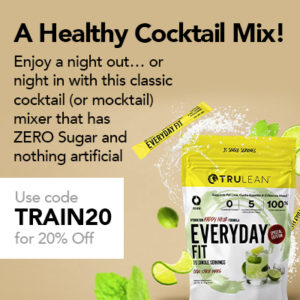Fitness
Separating Fact From Fiction
We uncover what matters most in the ongoing quest for improvements and results, and give you the tools to decide if the latest fad is really worth all that cash and effort.
Getting information from the internet can be like drinking water from a fire hydrant, because while there are endless sources there is often a dire case of information overload. It can be difficult to know what to trust and what to avoid. Even with an advanced degree and multiple certifications in the exercise field, I have to do some work to find credible, valid and trustworthy information. Without a formal background people can either be lost in the chaos, confused about what to do or find themselves focusing on the things that don’t apply to their goals. The result is constant program/diet-hopping looking for “the one final answer.” Alternatively, there are those who find something that looks appealing, but in reality, is pure hype with little merit-based scientific principle. What’s more, in fitness, the phrase “more than one way to skin a cat” could not be truer. Harrington Emerson expressed this perfectly and his words have stayed with me as a practicing professional strength and conditioning coach for years, “As to methods there may be a million and then some, but principles are few. The person who grasps principles can successfully select his own methods. The person who tries methods, ignoring principles, is sure to have trouble.”
This statement supports what’s so prevalent in exercise science. There are hundreds of methods or workout plans, diet plans and supplements which can and do lead to successful outcomes. The catch however is knowing what these underlying principles are to begin with, so that you can understand if a method is right for you and your goals. What follows is a cheat sheet of items to ask when trying to make your decisions and seek result-producing principles that focus on the big factors, not the tiny issues. If you don’t answer yes to the majority of the questions, consider a different course of action.
Step 1: Evaluate your training plan selection Examples include: Linear, non-linear, conjugate method, Westside method, split routines, once per week or twice per week, high-rep or low-rep, high or low volume?
- Does it use a periodized method over the month, year?
- Does it use progressive overload in some form?
- Do you enjoy this kind of training program/ style?
- Do you track weekly progress in your performance?
Step 2: Assess your dietary plan Examples include: IF, IIFYM, flexible dieting, gluten free, sugar free, dairy free, vegan, Paleo etc…
- Can you see yourself doing this in 1 year or more by the book?
- Can you afford the program long term?
- Can you follow the program within your social circle (family, friends)?
- Is it too restrictive for you to enjoy and comply?
- Does it eliminate common foods you enjoy eating?
- Is it beyond your culinary abilities?
Step 3: Critically examine your supplements
- Does the supplement have third party independent test approval (NSF, Informed Choice, Consumer Labs, USP, BSCG)?
- Can you afford the product long term?
- Does the supplement have scientific validation in multiple meta-analysis-based studies? (check JISSN for open access research position papers or Examine.com to look at consensus statements)
- Do the supplements have a purported ergogenic benefit relative to your goals (e.g. why take a thermos when bulking and why take a weight gainer when cutting?)
- Do you really need this supplement, or do you only want to try it?
Step 4: What recovery methods are available?
- Is there validated evidence to support the tactics you use? Search NLM (National Library of Medicine) for JSCR (Journal of Strength & Conditioning) abstracts by keyword to see what has been covered and the outcomes.
- Is the method practical and accessible (foam roll, contrast baths and cryotherapy)?
- Can you afford it? $60 weekly sports massage anyone?
Know what you’re looking to accomplish and become educated about the principles that have stood the test of time. In most cases this will reside in the middle ground, not the extreme ends of latest and greatest fads. If you’re serious about results, use the primary resources listed above to get the evidence-based information to guide you long term in your pursuit of valid information. Each of these will offer excellent research to support, refute and guide your own training goals.














